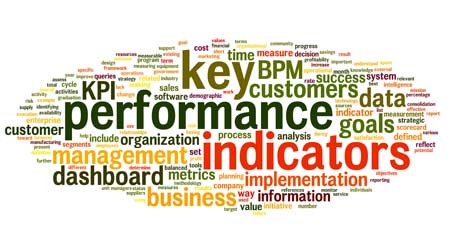Keeping track of the success of your vendor ecosystem can be difficult, particularly as it grows. A channel manager may be tasked with keeping track of dozens, even hundreds of sales partners. Even with data-crunching partner management software on your side having a quick overview of how things are running can be very valuable.
Key Performance Indicators (KPIs) are one of the best ways of doing this. KPIs are hand-picked metrics which are selected specifically because they’re considered a good indicator of overall performance. An obvious KPI in most cases would be monthly sales numbers. KPIs are often individualistic to a company, however, simply depending on their own short- and long-term goals. Here are some tips for finding the right KPIs for your ecosystem.
1. Simple and understandable
KPIs and KPI-related goals will be shared throughout your company and ecosystem so they should be relevant and understandable. If they’re too esoteric, the workers tasked with meeting those goals may not understand why they matter.
2. Relevant to business goals
This may seem obvious, but it’s important to not put focus on KPIs which could be considered “vanity numbers.” As an example, it’s easy for a business with a website to brag about the number of hits that website gets, but “hits” don’t mean “sales.” Website hits would be an inappropriate KPI except in very specific circumstances where the website only exists for awareness purposes.
3. Important in short- and long-term
A good KPI is neither shortsighted nor farsighted. They should be achievable in the short term, while still directly contributing to long-term goals. An excessive focus on short-term KPIs could easily lead to “penny wise, dollar dumb” policies that create trouble down the road.
4. Time-based
KPIs should always be measured in discrete time periods – days, weeks, months, years. This allows easy statistical comparisons between time periods, like month-over-month improvements.
5. Historically-minded
Ideally, a KPI should be based around data where you already have historical information, for the sake of comparison. However, there may be situations where you need to invent a new KPI, such as a company making its first moves into social media or other new technologies.
Good KPIs For Indirect Sales Organizations
- Partner acquisition costs
- Customer acquisition costs
- Total lifetime value of customers
- Leads-to-conversions ratios
- Contract/Warranty/Support/etc. (up sale numbers)
Finally, as a reminder: KPIs are meant to be shared in most cases. You should utilize shared communication methods to keep your partners informed about KPIs and their statistics. This helps keep them engaged and aware of their own performance relative to the ecosystem.
LogicBay Makes Statistic-Tracking Simple
Our LogicBay partner relationship management (PRM) software package includes robust statistics and analytic tracking abilities, along with a customizable dashboard which can put your most important KPIs front and center. Contact LogicBay today for a full demonstration!
